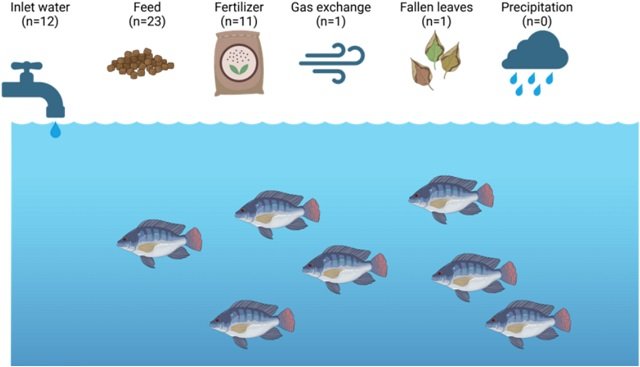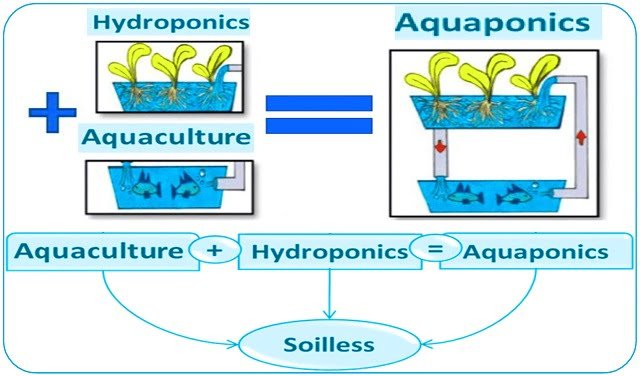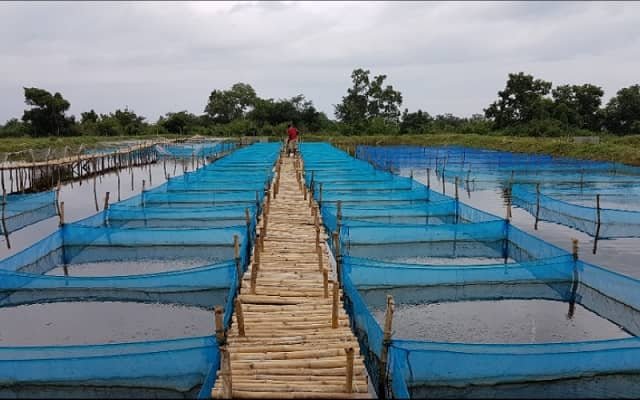
At the “heart” of every aquaculture pond exists an invisible but fundamental universe: a complex web of microorganisms that process nutrients, generate food, and ultimately determine the system’s health and production success. While aquaculture producers focus on the feed they add, the power of the natural trophic web is often underestimated. A recent review study published in Reviews in Aquaculture delves into how mathematical models can reveal the secrets of this ecosystem, offering tools to optimize production, reduce environmental impact, and improve profitability.
Understanding the interaction between bacteria, phytoplankton, nutrients, and the cultured fish or shrimp is crucial. The study, published by scientists from Wageningen University and Research and IPB University, translates the findings of this extensive research, which analyzes 29 models developed between 1984 and 2024, to offer a clear guide on how the science of modeling is transforming aquaculture management.
What are farm-scale models, and why are they vital?
- 1 What are farm-scale models, and why are they vital?
- 2 The invisible protagonists of the pond: microorganisms under the model’s microscope
- 3 The importance of stoichiometry (c:n:p)
- 4 Practical application: calculating a pond’s true carrying capacity
- 5 Conclusions and a look towards precision aquaculture
- 6 Entradas relacionadas:
Farm-scale models (FSMs) are mathematical tools that simulate the processes occurring within a pond over time. Think of them as a virtual laboratory for your fish farm. They allow for the quantification of how inputs (like feed and fertilizers) are transformed, consumed, and accumulated as waste.
According to the study, their main benefit is that they help answer key questions for any producer:
- Predictive: What will happen to the water quality if I increase the stocking density?
- Exploratory: What would happen if I change the feed formulation?
- Normative: What is the optimal strategy to maximize production without harming the environment?
The invisible protagonists of the pond: microorganisms under the model’s microscope
The study reveals that while many organisms exist, the models have historically focused on a select few.
Phytoplankton: the most studied actor
Phytoplankton is the most commonly included microorganism in aquaculture models (present in 25 of the 29 FSMs analyzed). Its role is twofold:
- Nutrient Immobilizer: It consumes dissolved inorganic nutrients in the water, such as total ammonia nitrogen (TAN) and phosphorus, effectively cleaning the water. This process can be more dominant than nitrification in reducing ammonia.
- Base of the Food Chain: It serves as direct food for some fish species (like tilapia and carp) or for zooplankton, which is in turn consumed by other fish.
The crucial role of bacteria: the forgotten recyclers
Surprisingly, only a small fraction of the models (5 out of 29) explicitly incorporate the dynamics of bacteria. This is a critical omission, as bacteria are primarily responsible for the decomposition of organic matter (feed leftovers, feces) and converting it back into inorganic nutrients that phytoplankton can reuse.
Assuming that bacteria are always “available” or in a steady state, as many models do, can lead to erroneous conclusions. Their recycling capacity is heavily dependent on the availability of carbon, a factor that often becomes limiting in intensive systems.
Stay Always Informed
Join our communities to instantly receive the most important news, reports, and analysis from the aquaculture industry.
The importance of stoichiometry (c:n:p)
One of the most revealing findings of the study is the need to consider stoichiometry—that is, the proportion of key elements like Carbon (C), Nitrogen (N), and Phosphorus (P) in both the organisms and their food.
Most models assume that if natural food is present, the fish will use it efficiently. However, the reality is more complex. A fish has a fixed nutritional requirement (a specific C:N:P ratio). If the natural food it consumes (e.g., phytoplankton) is deficient in one of these elements, the fish’s growth will be limited, no matter how abundant that food is.
The study presents a clear example: a fish might consume a large amount of carbon-rich phytoplankton, but if this food is poor in phosphorus, the actual growth will be dictated by the small amount of available phosphorus, not by the abundant carbon. Ignoring this nutritional imbalance leads to overestimating potential growth and inefficient feed management.
Practical application: calculating a pond’s true carrying capacity
Knowledge of the trophic web allows for determining a system’s carrying capacity: the maximum animal density that can be sustainably maintained.
The research presents a simulated case study with Nile tilapia in a biofloc system.
- Base Scenario: At a density of 15 fish/m², the system works well, and heterotrophic bacteria (those that consume organic matter) grow stably.
- 24% Increase: When the density is increased to 124% (approx. 18-19 fish/m²), the system remains stable. The bacteria continue to grow and process waste efficiently.
- 50% Increase: However, upon increasing the density to 150% (approx. 22-23 fish/m²), the system collapses. The grazing rate of the fish on the bacteria surpasses the bacteria’s growth rate. The bacterial population plummets, organic matter accumulates without being processed, and water quality deteriorates drastically.
This example demonstrates that carrying capacity is not linear and that the balance of the trophic web, especially that of the bacteria, is a sensitive indicator of a pond’s sustainable limit.
Conclusions and a look towards precision aquaculture
The study concludes that while current models are valuable tools, there is significant room for improvement to increase their accuracy and utility. The key recommendations for the future of aquaculture modeling are:
- Incorporate Bacteria Dynamics: It is essential to stop assuming they are in a steady state and start explicitly modeling their growth and recycling function.
- Apply a Stoichiometric Approach: Future models must consider C:N:P ratios to more accurately predict how natural food truly contributes to the growth of cultured animals.
- Adaptability: The knowledge applies not only to fish but also to shrimp aquaculture, with the necessary adaptations for specific culture conditions.
By integrating these elements, farm-scale models will become even more powerful management tools, allowing producers to optimize feed use, reduce costs, and operate in a truly sustainable and efficient manner.
Contact
Nurhayati Br Tarigan
Mathematical and Statistical Methods—Biometris, Wageningen University and Research
Wageningen, the Netherlands
Email: nurhayati.brtarigan@wur.nl
Karel J. Keesman
Mathematical and Statistical Methods—Biometris, Wageningen University and Research
Wageningen, the Netherlands
Email: karel.keesman@wur.nl
Reference (open access)
Tarigan, N. B., Verdegem, M., Ekasari, J., & Keesman, K. J. (2025). Natural Food Web in Farm Scale Models in Fish Aquaculture. Reviews in Aquaculture, 17(3), e70044. https://doi.org/10.1111/raq.70044
Editor at the digital magazine AquaHoy. He holds a degree in Aquaculture Biology from the National University of Santa (UNS) and a Master’s degree in Science and Innovation Management from the Polytechnic University of Valencia, with postgraduate diplomas in Business Innovation and Innovation Management. He possesses extensive experience in the aquaculture and fisheries sector, having led the Fisheries Innovation Unit of the National Program for Innovation in Fisheries and Aquaculture (PNIPA). He has served as a senior consultant in technology watch, an innovation project formulator and advisor, and a lecturer at UNS. He is a member of the Peruvian College of Biologists and was recognized by the World Aquaculture Society (WAS) in 2016 for his contribution to aquaculture.




